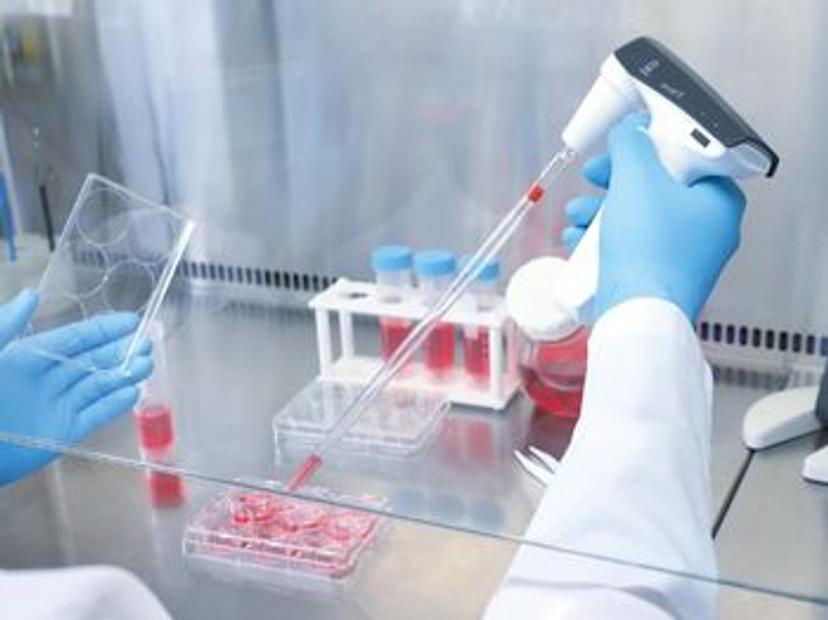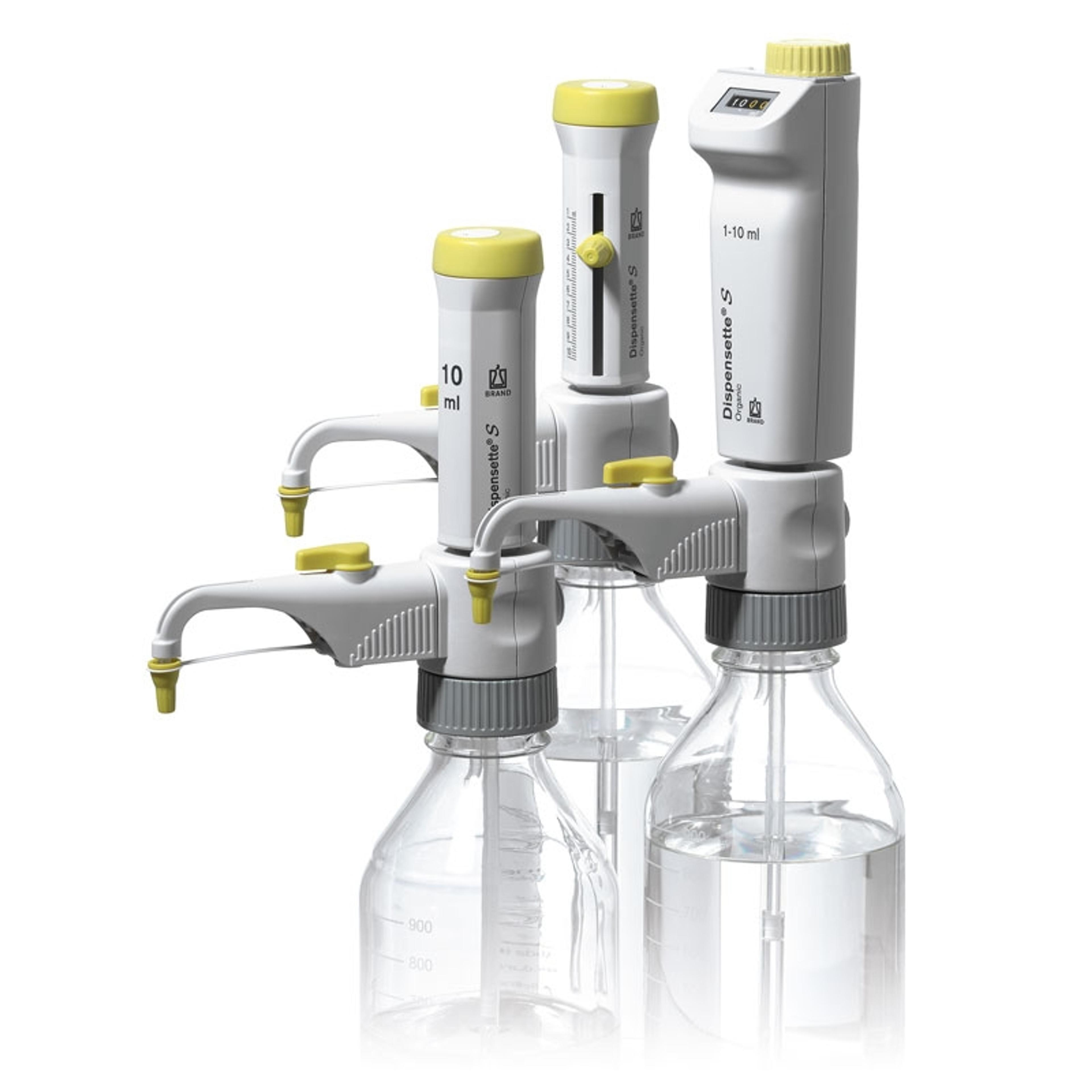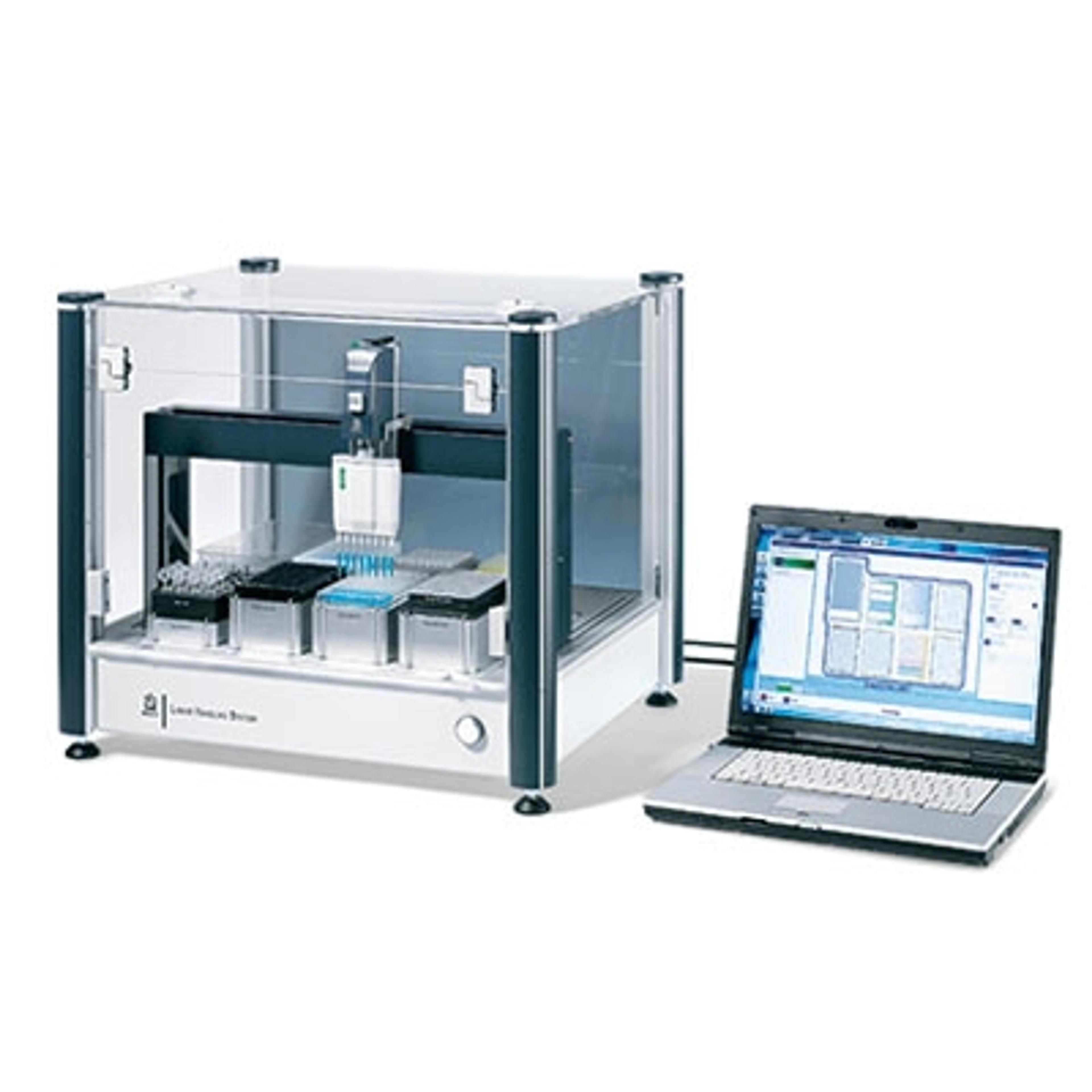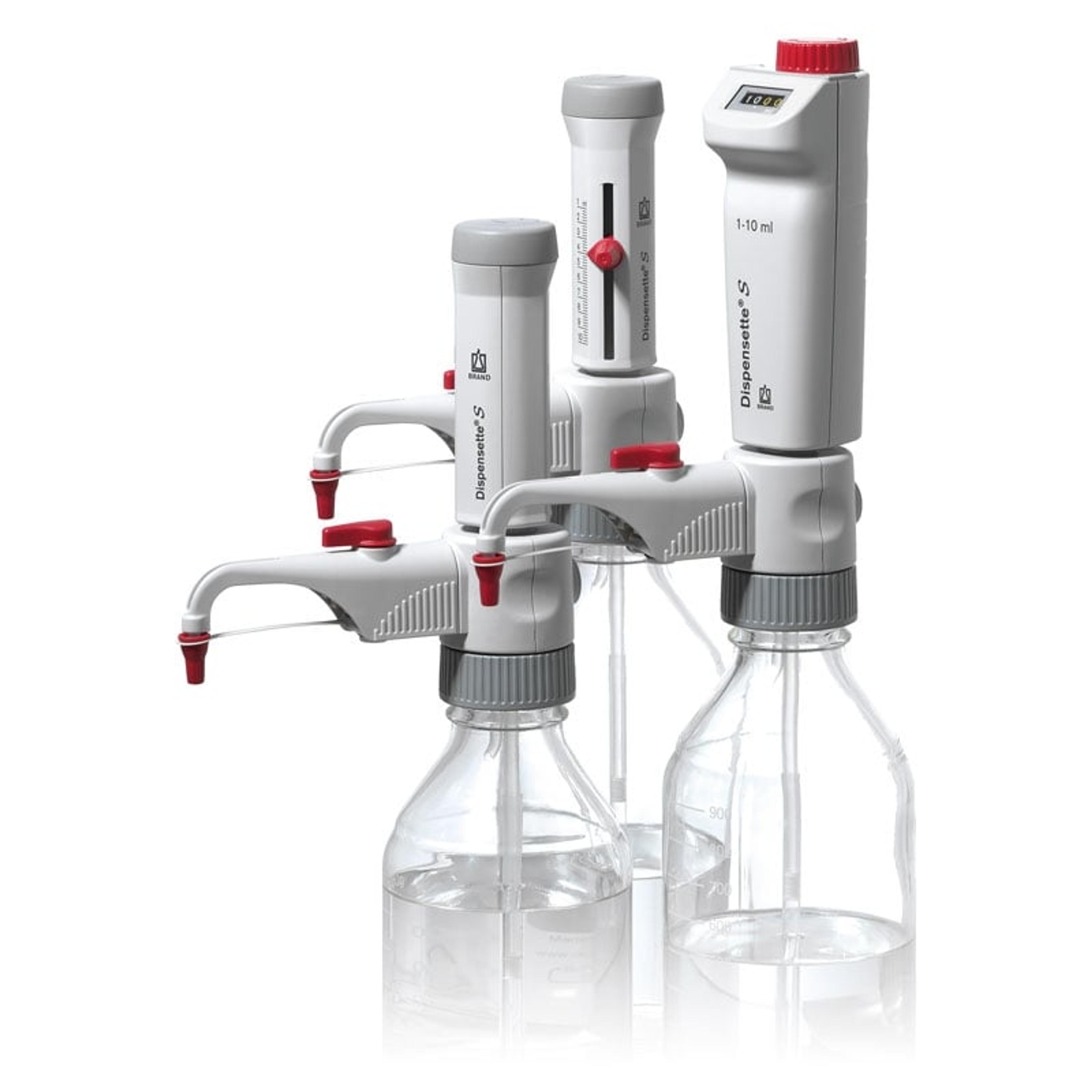Greener labs: How bottle top dispensers are making labs more sustainable, safe, and ergonomic
To avoid plastic waste, reagent spills, and workplace injuries, labs should start thinking about alternative liquid dispensing solutions to maximize lab efficiency
27 Oct 2022

Efficiency is vital for any lab to function at its best. Running an efficient lab is a challenging and complex task for any lab manager – with continuous pressure placed on staff to ensure operations run as smoothly as possible. Nevertheless, despite such challenges, it is vital that scientists working within the lab are able to perform tasks as efficiently and as safely as possible. The majority of lab work requires the scientist/technician to work long hours, conduct repetitive tasks, such as pipetting, and stand on their feet for extended periods of time. This means that workplace incidents, fatigue, stress, and increased human error are more likely to occur. It is important that each operator is able to perform each of their many routine tasks as safely as possible, whilst preventing injury.
For instance, pipettes are one of the most commonly used tools in modern laboratories. Pipetting and dispensing liquids are highly repetitive laboratory tasks, which are conducted routinely. Operators who spend extended periods of time pipetting can develop a number of fatigue-related issues, such as joint pain, repetitive strain injury (RSI), tendinitis, and back strain – relating to poor posture. Notably, many of these issues can be related to the skill and expertise of the user, however, this is not always the case. Fortunately, technological advancements have now enabled operators to use cutting-edge technology to help protect them from injury and improve their posture, without compromising on accuracy – so users can work as safely as possible.
Plus, it is important that labs put in place the correct productive processes and resources to optimize quality results and effectiveness, while also minimizing wasted time and promoting safety. To improve safety and protect the environment, it may only require a few simple changes to create big and impactful results. As labs strive to boost throughput and shrink research timelines, a fast-emerging issue is becoming more apparent – the sheer volume of waste being generated in research settings. Many labs are now driven to create greener working environments by adopting more eco-friendly products and processes. For instance, consumables and pipettes using disposable tips quickly fill up waste bins, and as busy scientists handle large reagent bottles, spills and wastage become more frequent and hazardous.
In this exclusive interview, we speak with Rebecca Lampert, Product Manager at BrandTech® Scientific, as she shares actionable steps that can help labs reduce waste, while promoting safety and convenience by providing users with instruments to build a more sustainable and safer workplace.
Waste is, unfortunately, a large part of the research industry. Therefore, any efforts we can take to minimize waste and maintain safety standards are imperative.
Rebecca Lampert BrandTech Scientific
Scientists around the world are becoming more aware of the volume of waste being generated in the lab daily. What are some ways to minimize waste?
RL: Waste is, unfortunately, a large part of the research industry. The research workflow contributes to waste of both consumables and chemicals. Therefore, any efforts we can take to minimize waste and maintain safety standards are imperative. Even a small replacement of plastic consumables goes a long way. For example, by using a bottle top dispenser instead of many plastic tips, it’s possible to eliminate one part of the workflow that would normally require many plastic tips. Quality bottle top dispensers are also long-lasting, so waste reduction compounds over time.
Why would someone want to use the Dispensette® S bottle top dispenser in their lab, and are they a safe option for the lab?
RL: Dispensette S bottle top dispensers contribute to waste reduction by dispensing accurate volumes of reagents without requiring new plastic tips every time. Additionally, throwing out contaminated reagent bottles is often a wasteful expenditure for labs. By limiting the frequent opening and closing of reagent bottles, contamination can be prevented. Moreover, precious, and expensive materials can be correctly dispensed each time, so volumes remain accurate across experiments and the results are reproducible. In turn, this means fewer repeats.

Another concern for labs is safety. The lab environment can be a hazardous place to work both in terms of workers being exposed to numerous hazardous chemicals as well as musculoskeletal stresses from incessant pipetting.
Incorporating a simple bottle top dispenser resolves both these problems – it protects the user from accidental bottle spills, and also relieves them from having to go back and forth between the reagent bottle and test tubes or microplates.
Regularly opening bottles to aliquot reagent volumes can also lead to spills and contamination. If material is spilled, it can be financially wasteful. If the chemical is hazardous, it can affect the user. The lab will then end up wasting time restoring the environment to safety.
Can you share a couple of examples where bottle top dispensers were utilized as a sustainable, safe, or easy-to-use dispensing option for a lab?
The lab environment can be a hazardous place to work both in terms of workers being exposed to numerous hazardous chemicals as well as musculoskeletal stresses from incessant pipetting.
Rebecca Lampert BrandTech Scientific
RL: Two interesting applications come to mind. One is attaching the Dispensette S to a large reagent drum. So, instead of trying to lift heavy liquid or buying an expensive apparatus to work with a large volume, the Dispensette S dispenses straight from the drum. This can also help to reduce workplace injuries. Another interesting use of the Dispensette S has been extracting samples in the cannabis industry. Scientists have taken advantage of the flexible discharge tube to easily fill racks of tubes rather than having to bring each tube to the dispenser. Plus, the Dispensette S is designed to be used by one hand, so the other is available to navigate that flexible discharge tube.
Can you share some design features that labs need to consider when selecting bottle top dispensers?
RL: For some ‘good to have’ features of bottle top dispensers, in general, it’s recommended that you choose an easy-to-use dispenser with a simple, efficient, and ergonomic design.
For example, our Dispensette S and Dispensette® S Organic bottle top dispensers can be used with one hand while maintaining the highest safety standards, so the other hand is free for other experimental steps. In particular, the floating piston design forms a zero-wear sealing system to prevent spills, and the integrated recirculation valve allows priming without wasting any chemicals. Additionally, a hinged and threaded safety cap is built into both analog and digital versions so that the discharge tube is covered to prevent unintentional dispensing while not in active use. In terms of making pipetting more ergonomic, BrandTech supports the design of high-quality products that reduce manual strain from the repetitive tasks that scientists are burdened with every day in the lab.
Whenever a new liquid handling apparatus is purchased, there is one question on everyone’s mind: How much time (or effort) will it need for maintenance?
RL: I think that the readers will be happy to hear that BRAND™ products are mindfully made to last a long time in the lab and to be maintenance friendly. This means that our bottle top dispensers are as easy as possible to clean and autoclave. They can be easily taken apart for cleaning. Each product's operating manual comes with recommended cleaning procedures that labs can simply follow.
As the liquid handling industry has progressed, both high throughput and scale have become the emphasis. However, this also means increased waste. So, what steps are companies taking to make liquid handling more sustainable and environmentally friendly?
RL: That’s a great question. There will continue to be an emphasis on environmentally friendly automated options for liquid handling. We work diligently to protect the environment. Our manufacturing process focuses on reducing waste and recycles the remaining waste that can't be avoided. We’ve also set our sustainability goal to reduce our carbon footprint by 70% by the year 2030.



